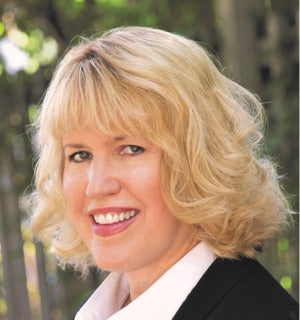IT leaders from tech, insurance, and finance sectors share their strategic priorities for 2021. Self-service solutions, edge computing, analytics, and low-code development top CIOs’ roadmaps.
As CIOs get ready to close the books on a year gripped by a global pandemic, many are looking to the future with great optimism.
You read that right: Optimism. Because most CIOs are building on the momentum they facilitated in 2020 by leveraging digital technologies to augment employee and customer experiences.
Sixty-one percent of CIOs say they feel more influential than ever before, courtesy of their work to help hedge their businesses against the coronavirus, says Steve Bates, principal of KPMG’s CIO advisory practice, citing data from the Harvey Nash/KPMG 2020 CIO survey, which polled 4,200 IT leaders.
CEOs have almost universally recognized the importance of using technology as a business accelerator and will build on that accordingly in 2021, Bates says. Which means that IT leaders should have the budget to build on their digital work — even with some expected belt-tightening.
So what are CIOs prioritizing? Here some CIOs provide insights on their strategic IT roadmaps for 2021.
Data science and analytics
SurveyMonkey is creating analytics systems that churn through data points from surveys, customer purchase patterns and behaviors, and a multitude of other signals to generate better insights for the business, says CIO Eric Johnson.
SurveyMonkey
Ideally, this will enable SurveyMonkey to craft Amazon- or Netflix-like recommendations that can help sales staff better engage with customers, Johnson says, adding, “How we drive prescriptive analytics is one of our top priorities.”
To do this, SurveyMonkey must take caution to create appropriate guardrails that are sensitive to compliance and privacy rules, including stripping out personally identifiable information. But the company must also move rapidly because social media has shrunk the window of opportunity for engaging customers, says Johnson, who adds that his staff has rebuilt the company’s data stacks and is reorienting around data science, visualization, and design skillsets.
“This is where CIOs have to step up, helping the business identify those signals,” Johnson says. “If we don’t do it, the competition will do it for us.”
Machine learning
It’s never too late to refine your mobile experience on behalf of your users, a fact that ASCAP CTO Tristan Boutros is taking to heart in 2021.
ASCAP
Boutros plans to use machine learning to improve the way the nonprofit organization, which strives to ensure its 800,000 musicians and composers get precise royalties for their art, serves up information for ASCAP’s distribution and repertory teams. This will include recommendations and other features to make the mobile app more intuitive and useful.
“ML is going to be a massive focus for us,” Boutros says. “It’s about how to make sure our members are getting experiences in a unified, easy-to-use way.”
This priority comes on the heels of huge strides ASCAP made in moving its systems to the cloud, including re-engineering its legacy operations to stream data closer to real time, rather than simply process batch data overnight, which was clunky and inefficient for an organization seeking to serve up information on its 11.5 million works more dynamically. The impetus: the industry’s migration toward digital streaming, which creates vast amounts of data points to manage.
Edge computing
Having cemented eBay’s hybrid cloud, which consists of private cloud systems bursting out to co-location facilities worldwide, CTO Mazen Rawashdeh expects to further refine the payment processor’s edge computing capabilities, using ML and other emerging technologies to facilitate dynamic caching and failover within and across regions.
eBay
This helps to reduce service degradation and to boost resiliency for eBay’s critical network, which saw a “massive influx of customer demand and activity” as more people moved to shop online during the coronavirus outbreak, Rawashdeh says.
While many companies use edge purely for caching, Rawashdeh says his team incorporates AI, ML, and computer vision technology at the edge to “capture things that might impact customers,” including fraud and other potential disruptions.
Interestingly, some watchers expect edge computing could peck away at cloud computing’s market share. “As edge computing becomes a ‘cool’ new platform for business computing, it will siphon some of the money that would otherwise have gone to cloud expansion,” says Glenn O’Donnell, a Forrester Research analyst.
Intelligent enterprise assistants
Like most corporate leaders, Nutanix CIO Wendy Pfeiffer is contemplating the tech provider’s evolving hybrid work model. In a world where some regions are vastly more impacted by the pandemic than others, Pfeiffer must support every mode of working in parallel. “Informed self-service is a big priority” for next year, Pfeiffer says.
Nutanix
To that end, Pfeiffer expects intelligent agents, powered by natural language processing (NLP) will help greatly with Nutanix’s focus on enabling employees not just in IT, but also in HR, sales, legal, and other units to help themselves through automated self-service tools.
Nutanix employees can currently request information, technical help, and other services via intelligent assistants that live in workflows, including ServiceNow, Slack, and email. For instance, IT can verbally spin up virtual machines or manage compute clusters via ServiceNow.
Today, close to 60% of tasks are automated through Nutanix’ chatty agents. But Pfeiffer expects to broaden the scope of intelligent agents across every business unit.
Even with such automation capabilities, Pfeiffer admits it’s difficult to plan for every contingency. “I worry that I don’t know what I don’t know.”
Low-code development
Tim Langley-Hawthorne’s IT team is looking closely at low-code software development for 2021. The Hitachi Vantara CIO says that an early test bore fruit when one of his service desk leaders used Microsoft PowerApps to build a simple time-off request app to automate a process that used to take a day’s worth of work in an Excel spreadsheet.
“Low-code/no-code is good for getting basic workflows up and running,” says Langley-Hawthorne. He says cultivating low-code development is in line with his philosophy of empowering employees, including business analysts and other nontechnical staff, to “experiment around the edge” of core technology systems.
“If it causes trouble, or gets out of control, we can reel it back in,” he adds.
The bottom line
Ideally, CIOs’ priorities will be based on a proportionate response predicated by the markets in which companies compete, says KPMG’s Bates.
For example, a company like Peloton, whose sales of interactive exercise machines are booming, will have different priorities than a hotel chain, an industry mired in the pandemic doldrums. The former faces a scaling challenge while the latter may have to take out costs while transforming its business operating model, Bates says. But both surging and struggling businesses must cultivate digital interactions that pay off or people will go elsewhere.
“It’s not a homogenous story,” Bates says. “The economic recovery patterns matter.”
This article originally appeared on CIO.




